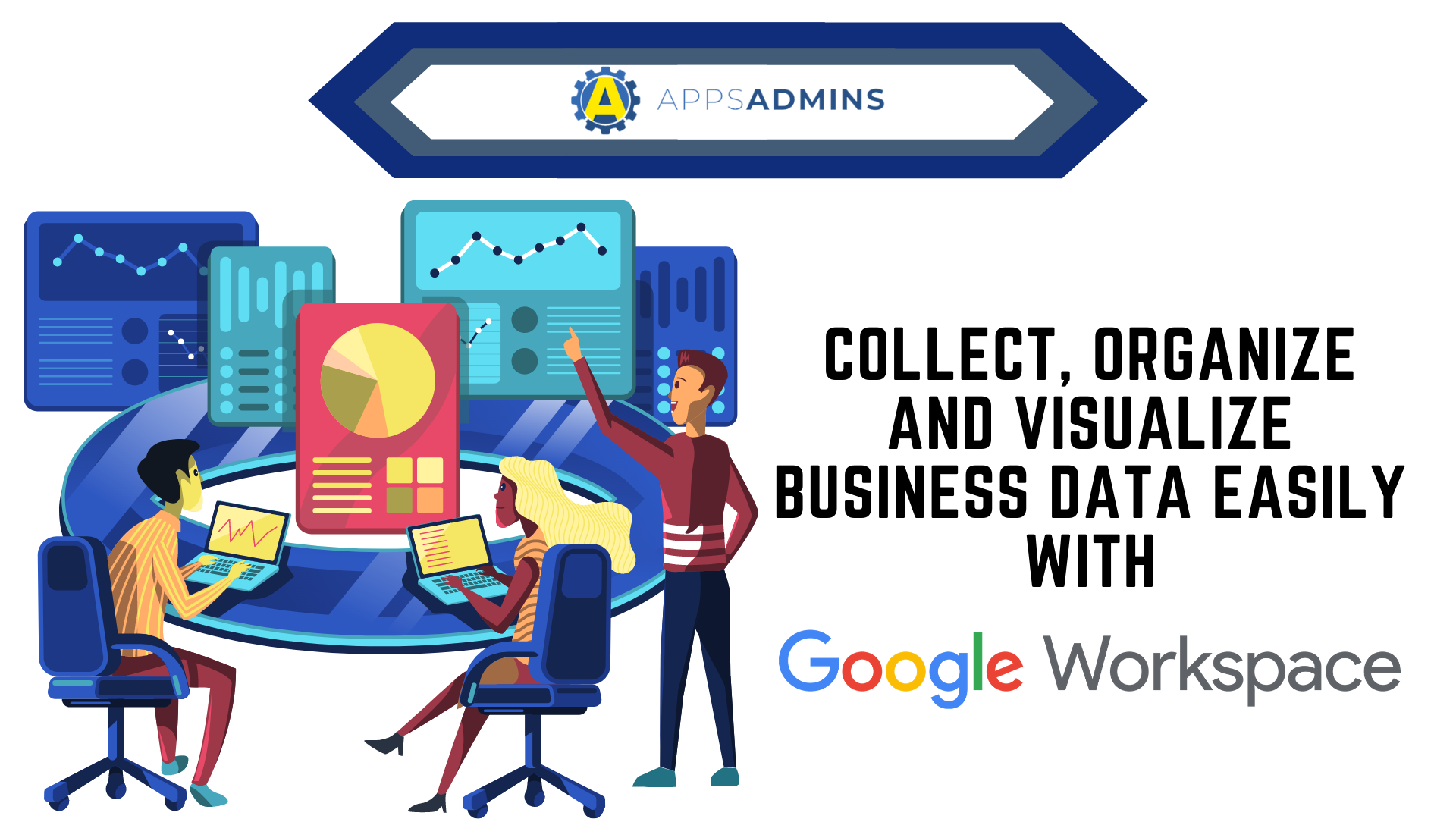G Suite Business Free for 30 Days
Sign up for a Free 30 Day Trial of G Suite Business and get Free Admin support from Google Certified Deployment Specialists.

We're all talking about digital transformation these days - and yet, many companies still don't know how or where to get started. In fact, many businesses remain glued to legacy systems, with companies moving, on average, 40% of their computing power to the cloud.
Though we could spend our time discussing the benefits of legacy, and the need to go digital, the truth is that digital transformation is no longer a suggestion - it's a requirement. In addition to Cloud, there are a host of technologies forcing the movement to a more transformed environment for today's companies. Failing to move ahead, means being left behind.
Start Digital Transformation at Home, in the IT Department
We know digital transformation is more than just switching communications servers and phones from ground to cloud. Digital Transformation is about the evolution of business processes in the digital age. For IT Departments failing to move ahead this means being left behind.
True digital transformation with UC&C has IT departments stepping up to new technology by re-empowering other departments.
Enterprise Cloud and SaaS Apps allow for granular access control for admin consoles, provisioning and user management. An advantage to UC&C, specifically for IT departments, is to move the core, mostly mundane user management tasks back to their original “paper” departments.
CIOs Stepping up to UC&C are making a strategic shift for their enterprise and their department. Now the team has the time to move ahead in the other digital trends transforming our world and economy.
5 Digital Transformation Trends Driving Unified Communications and Collaboration
In a world where technology continues to seduce modern organizations, "digital transformation", is the lurking issue that needs to be considered. Digital transformation is the use of new technology designed to make processes more efficient and effective. It delivers new opportunities for businesses, and pushes each of us into the future. According to IDG connect, DX, or "digital transformation", is the key focus of all Western European markets.
Unfortunately, few businesses feel they're hitting the mark when implementing new technologies.
Perhaps the biggest problem holding back digital transformation, is the fact that people simply don't know how to define it for their own enterprise. After all, digital transformation isn't as simple as it seems. It's a "bespoke" answer to the questions facing businesses today, rather than a one-size-fits-all model.
This year, we've noticed many new vendors embracing devices for mobility, technology in the realms of artificial intelligence and chatbots, and increasing challenges in collaboration and communication environments. In other words, UC&C is growing. That could mean that for many companies, digital transformation means using technology to improve commercial performance, boost operational efficiencies, improve customer service, enhance workplace environments, and introduce new revenue streams.
The good news, is that UC&C tools can address many of these areas. Here, we're going to look at some of the latest trends disrupting the communications industry, examine the paths fueling digital transformation, and tell you how you can evolve your own company.
Digital Transformation Trend 1: The Move to Contextual Communications
In the last year or so, we've seen numerous high-profile technology companies launch innovative new tools designed to enhance the collaborative workforce. For instance, at UC EXPO, we dove into the ever-growing need for disruption and new technology in the industry with things like the Cisco Spark Board and huddle rooms.
The only problem is, as various vendors deliver new tools for communication, few are looking into interoperability features, which means that we're developing fragmented approaches to the future - far from the unified utopia we hoped for.
CPaaS could be the cure to this silo problem. Communications Platform as a Service allows developers to add real-time features for communication to their own applications without the need to build back-end interfaces and infrastructures. CPaaS companies can ensure that businesses of any size can embed and develop their own customized communication features - ensuring a more contextual response to communication needs.
With CPaaS and contextual communication, we can embed chat and call functions into systems to allow for more frictionless, efficient Comms solutions - removing the barriers found in almost every UC product currently on the market. After all, if we want to achieve a truly efficient and productive future, unified communications must become truly "unified", and that means allowing apps and tools to interoperate.
Digital Transformation Trend 2: The Use of Big Data
Analytics and big data are topics that belong in any discussion of digital transformation. According to Cisco, global IP traffic should reach about 3.3 ZB by 2021. If that wasn't shocking enough, the number of devices connecting to IP networks should be about three times the human population by the same year. Ultimately, this huge growth just goes to show how digital connectivity is quickly changing the world.
Data isn't just getting bigger either - it's also changing in format too. Data has become the new currency of many businesses, and its development will be essential to digital transformation in any communication company. After all, information is what enables immediate change and future strategies, thanks to advanced data science and predictive analytics. Learning how to harness and use data correctly could be the key to better organizational efficiency, and customer experience.
With big data tech, companies will be able to answer the questions of their customers in seconds, enabling the quick reactions to key business challenges and questions that could build competitive advantages and improve performance overall. Analytics and big data are becoming more closely entwined by the day. While data management and analytics once belonged to different silos in organizations, breaking down these barriers could be key to true digital transformation.
Digital Transformation Trend 3: Encryption and Security
Security will always be a top concern for any business. As more high-profile cases appear in the news each week, protecting from fraud, network breaches, and data theft will always be essential. As the GDPR changes gradually come closer during May 2018, concerns regarding security and encryption will become even more significant.
Interestingly, contextual communications could help somewhat with security, by helping to outline how businesses and people communicate. This controlled approach could mean that data is less likely to leak than it may be with the traditional forms of communication. Additionally, beyond contextual communications, all aspects of UC&C platforms should be well-protected.
In on-premise situations, companies know who is responsible for maintaining borders for security for their business. However, there seems to be ongoing confusion when it comes to establishing security for hosted platforms. After all, every part of the chain could effectively pass the responsibility onto the next person. The best scenario is based on ensuring that hosted platforms have the resilient and robust encryption they need built-in, without passing complexities onto the end-user or resellers.
UC&C solutions need to start asking themselves how they can make their systems more reliable, and secure, as well as scalable, feature-rich, and cost-effective. As we move into the future of digital transformation, we hope to see more quarantine processes for unknown devices, more secure HTTPS handset solutions, and better steps for preventing fraud.
Digital Transformation Trend 4: Hosted and Cloud Communications
It may be a surprise for some to learn that the cloud is still drawing a great deal of attention in the communication and collaboration section. Many companies are still trying to figure out whether a full move to the cloud is right for them, even as public clouds emerge as the nature home for mission-critical applications that require ongoing flexibility and scalability.
According to the Cavell Group, hosted telephony services are still growing, with an increase of 24% over the previous 12 months - driven by changing infrastructure and the overall decline of email and telephony for UC&C solutions. Additionally,, Research and Markets revealed that the hosted IP telephony and UCaaS market continues to move along a strong trajectory of growth - creating value and business growth opportunities for service providers.
UCaaS offers companies thee chance to take advantage of secure, seamless, and highly cost-effective solutions for communication across a range of channels in the business world, including services on a range of platforms and channels. With flexibility, easy deployment, and growing value, the cloud can be an obvious solution for modern companies in search of digital transformation solutions. Because it's possible to access a wide range of advanced communication solutions simply by connecting with online services, the cloud should quickly become the dominant model for business telecommunication of the future.
Market research suggests that by 2020, more than half of all businesses should be running UCaaS systems. Cloud adoption is growing too, from less than 20% of businesses using cloud platforms in 2010, to around 90% using them today.
Digital Transformation Trend 5: AI and Chatbots
It's hard to believe that not so long ago, we were struggling to imagine a world where we could have one-to-one video conversations instantly over our computers. Now, we're embracing brand-new solutions like huddle rooms, whiteboards, and real-time communication features that make collaboration easier than ever. Today, AI and chatbots might seem like a bizarre new concept, but the truth is that they're quickly rising in terms of potential and popularity.
You've already seen the rise of robots in things like Alexa, and Siri. In the consumer space, these pieces of advanced technology can make communication between people and machines simpler. However, the possibilities are even greater for the business space. Indeed, robots can quickly and easily deal with common customer complaints, queries, requests, and questions, making suggestions according to their knowledge, and freeing agents up to tackle more human-focused tasks.
As time passes, some AI Solutions can even learn from the interactions they have, and therefore continuously improve the services they can offer. There are even cognitive interactions available, and contextual communication strategies where robots can understand sentiment, accents, and more to naturally enhance collaboration between people and brands.
If we discover how to use AI and chatbots correctly to enable delightful experiences between customers and brands, and even for internal operations, the possibilities are endless. AI is just another example of using context in the communication sector, to make the future of UC&C more efficient, and effective.
The 5 New Rules of Digital Transformation
Knowing what the future of digital transformation looks like, doesn't necessarily mean that you know how to implement it into your own business framework. The truth is that thanks to things like new contextual technology, open APIs, and CPaaS solutions, we're finally taking steps towards an enterprise future that's more connected than ever.
Soon, we'll be able to access platforms that can link together processes, systems, and workforces in real-time, ensuring that everyone within an industry receives the same information at the same time. For modern businesses, the future of UC&C looks bright, but only if they can learn how to use digital transformation to their advantage.
So, what are the rules and best practices that could work here? What pathway can you follow to digital transformation success in UC&C?
Rule 1: Consider Policy Engines
Digital transformation is an incredible view into what the future might look like when communication and collaboration moves beyond the connections between people, and begins to focus on the links between people, platforms, technology, and more. As an increasing number of technologies and software tools appear in the space, CIOs will need a more comprehensive approach to their policies. Just as operations in the IT space have previously been automated to ensure better efficiency, it's also possible to automate aspects of policy creation and enforcement through policy engines.
Rule 2: Look for Ways to Break Boundaries
We mentioned right at the beginning of this article that in order for digital transformation solutions to thrive, interoperability needs to be considered throughout all platforms and solutions. It's unlikely that most companies are going to jump straight into the cloud during the next couple of years, which means that you need to find ways to invest in solutions that allow for a more effective hybrid environment. Think about how you can combine analytics and data management for a more efficient future, and stronger customer relationships.
Rule 3: Make the Most of Insights
Speaking of data management and analytics, the more insight you can gain from your adventures into communication, the more you can take advantage of true digital transformation. The future will be flooded with more data than ever before, and that means that you need to find an effective way of leveraging that data to make it work for your company. With analytics and big data solutions, you can take advantage of machine learning tactics to incorporate AI and chatbots into your business.
Rule 4: Put User Experience First
The idea behind digital transformation isn't focused entirely on making sure that you take advantage of the newest technologies as and when they emerge. Instead, the idea is to focus on adapting technology that transforms the solutions in your own specific business. Make sure that you invest in apps that can improve comfort and efficiency for your workers. Think about UX, and discuss what your team needs for a more efficient future.
Rule 5: Stay Open
Finally, when it comes to digital transformation in UC&C, it's important to recognize that no modern solution should be separate, or siloed from the rest of your business. Today, developers need to avoid monolithic answers to their communication and collaboration efforts. This means adapting a hybrid selection of the most efficient and appropriate individual tools. Think about switching to open-source solutions for your business - particularly those that are API friendly. In the world of digital transformation, integration and flexibility are king.
.jpg?width=818&name=appsadmins-svg-rules-1%20(2).jpg)








